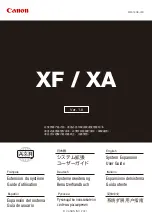
Unit Description
5-11
Electric Operation
Continuous Mode with or without Modulation
1
• Cool
• Modulated Cool
2
• Null
3
• Hot Gas Heat
4
• Full Heat
4
(hot gas and electric heaters
5
)
• Defrost (hot gas and electric heaters
5
)
1
If battery condition requires unit start-up during Null mode, unit starts and operates in Hot Gas Heat or Cool.
2
If unit is equipped with modulation. If setpoint is below -9 C, modulation valve operation is locked out.
3
Unit mode is Null when battery charge level is satisfied.
4
Null mode if setpoint is below -9 C.
5
Electric heaters are not available on SL-100, SL-100e, SL-200 and SL-200e.
Cycle-Sentry Mode with or without Modulation
1, 2
• Cool
• Null
3
• Hot Gas Heat (Cool)
4
• Full Heat
4
(hot gas and electric heaters
5
)
• Defrost (hot gas and electric heaters
5
)
1
Modulation valve operation is locked out during CYCLE-SENTRY operation.
2
If battery condition requires unit start-up during Null mode, unit starts and operates in Hot Gas Heat or Cool.
3
Unit mode is Null when battery charge level is satisfied.
4
Null mode if setpoint is below -9 C.
5
Electric heaters are not available on SL-100, SL-100e, SL-200 and SL-200e.
Defrost
Defrost can be manually initiated, or automatically initiated by controller defrost timer or controller Demand Defrost algorithm.
A demand defrost occurs when the difference between the return air temperature, discharge air temperature and evaporator coil
temperature becomes excessive.
Defrost can be initiated any time the evaporator coil temperature is below 7 C. If the unit is in Null (on CYCLE-SENTRY Engine
operation only), initiating defrost will cause the unit to start and operate. When a Defrost cycle is initiated, the controller energises
the damper motor or solenoid, pilot solenoid, heater contactor and Defrost icon. The controller maintains the In-range signal
during defrost.
The unit remains in defrost until the evaporator coil temperature increases to 14 C. If the evaporator coil temperature does not
rise to 14 C within the defrost duration time limit (30 or 45 minutes), the controller terminates defrost. The evaporator then returns
to operation based on controller demand.
SL-300 (µP-IV or µP-V Controller)
Operating Characteristics of µP-IV and µP-V Software
• µP-IV and µP-V software uses a complex algorithm to determine the unit operating mode. Therefore you can NOT predict
the unit mode of operation by comparing the setpoint to the return air temperature.
• Different versions of software may provide different control sequences and operating mode switch points.
• The unit always starts in Low Speed. Low speed operation continuous for a minimum of 2 minutes, or until the engine coolant
temperature increases to 10 C.
• The High Speed Pull-Down (HSPD) feature controls unit operation on initial start-up. If HSPD is set to [YES], the unit
operates in High Speed (after engine warm-up) until setpoint is reached on initial unit start-up. The unit them operates in low
speed or high speed as required by the controller. Factory HSPD setting is YES.
• When the setpoint is below the Fresh/Frozen (FRFZ) temperature, High Speed Heat (or all Heat) is locked out. The Fresh/
Frozen temperature is factory set at -4 C, but may be field programmed to -4 C or -9 C (depending on software version).
• When the return air temperature is within several degrees of setpoint, an In-range icon will appear in the LED display.
• During Defrost mode, unit operates in Low Speed Heat only.
• When the unit is in Null on electric standby operation, the drive motor and compressor do NOT operate.
• Controller defrost timer intervals are factory set for 4 hours when compartment temperature is out-of-range; and for 6 hours
when compartment temperature is in-range.
Summary of Contents for SLXi Spectrum
Page 17: ...Safety Precautions 2 5 Warning Decals...
Page 18: ...Safety Precautions 2 6 Warning Decals Information Decals...
Page 74: ...Unit Description 5 30...
Page 128: ...Controller Operation 7 28...
Page 156: ...Electrical Maintenance 8 28...
Page 234: ...Refrigeration Maintenance 10 22...
Page 309: ...13 Mechanical Diagnosis TK 482 TK 486 and TK 486V Engines 13 2...
Page 316: ...Mechanical Diagnosis 13 8...
Page 322: ...Refrigeration System Diagnosis 14 6...
Page 332: ...Single Temperature Refrigeration System Diagrams 15 10...
Page 339: ...Multi Temperature Refrigeration System Diagrams 16 7...
Page 340: ...Multi Temperature Refrigeration System Diagrams 16 8...
















































